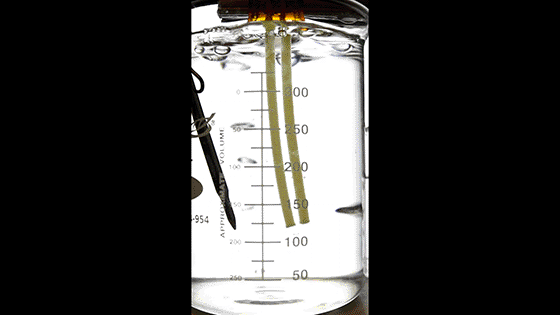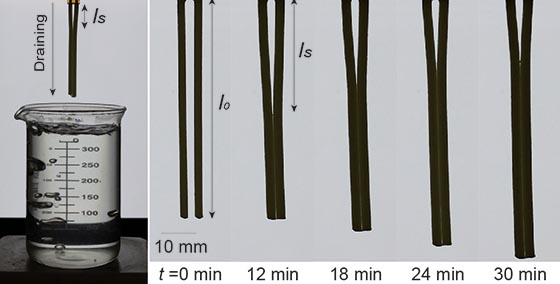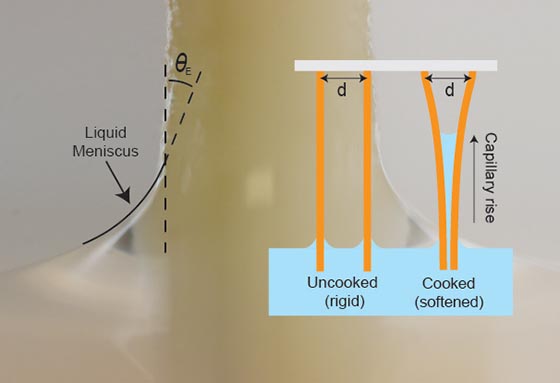Enjoy better-cooked pasta with…physics and a ruler?
Multitudes of amateur chefs will soon enjoy perfect al dente pasta and cleaner kitchen walls, as new research shows how measurements with a ruler—not the mythologized throwing against the nearest vertical surface—may be the best way to confirm when pasta is fully cooked.
In their presentation at the 2022 American Physical Society March Meeting Science Al Dente: Elastocapillarity and Swelling of Cooked Pasta, researchers from the University of Illinois Urbana-Champaign have utilized fundamental physical principles and conclusions, using a ruler to measure the stiction distance between two vertically hanging pasta to gauge their cooking status.
During a press briefing at 9:00 a.m. CDT on Monday, March 14, 2022, the researchers will discuss their results. The briefing will be held onsite and streamed via Zoom.
In a manuscript, they describe several aspects of pasta noodle physics as a function of cooking. As the title describes, it builds up systematic experiments and simple theory that first cover swelling, modulus changes, and finally elastocapillarity as a method to gauge the stiffness and hence the cooked texture.
The researchers theoretically and experimentally investigate the swelling and softening of pasta due to liquid imbibition, as well as the elastic deformation and adhesion of pasta due to capillary force. As water diffuses into the pasta during cooking, it softens gradually from the outside inward as starch swells.
Details of the research will be presented by author Jonghyun Hwang at the March 2022 meeting of the American Physical Society. A manuscript containing the details titled Swelling, Softening and Elastocapillary Adhesion of Cooked Pasta is available to download.
Published at https://mechse.illinois.edu/news/better-cooked-pasta

Two spaghetti noodles sticking to each other. They are cooked for 12 minutes at 100 degrees Celsius. Noodles detach as they are submerged back.

Capillary-induced adhesion photographed at different cooking times. The stick length (denoted as ls in the figure) shortens with increasing cooking time. Length and girth radius of the noodle increases due to swelling and noodles stick better as they become softened.

A close-up photo of the liquid meniscus that forms when a single spaghetti noodle is stuck into the water. Surface tension of the water makes the liquid climb up the rod. The schematic on the right shows how surface tension manifests itself when two vertically hanging rods, displaced by the gap (d), are stuck in the water. Capillary force deforms soft solids if their elastic resistance is overpowered.
